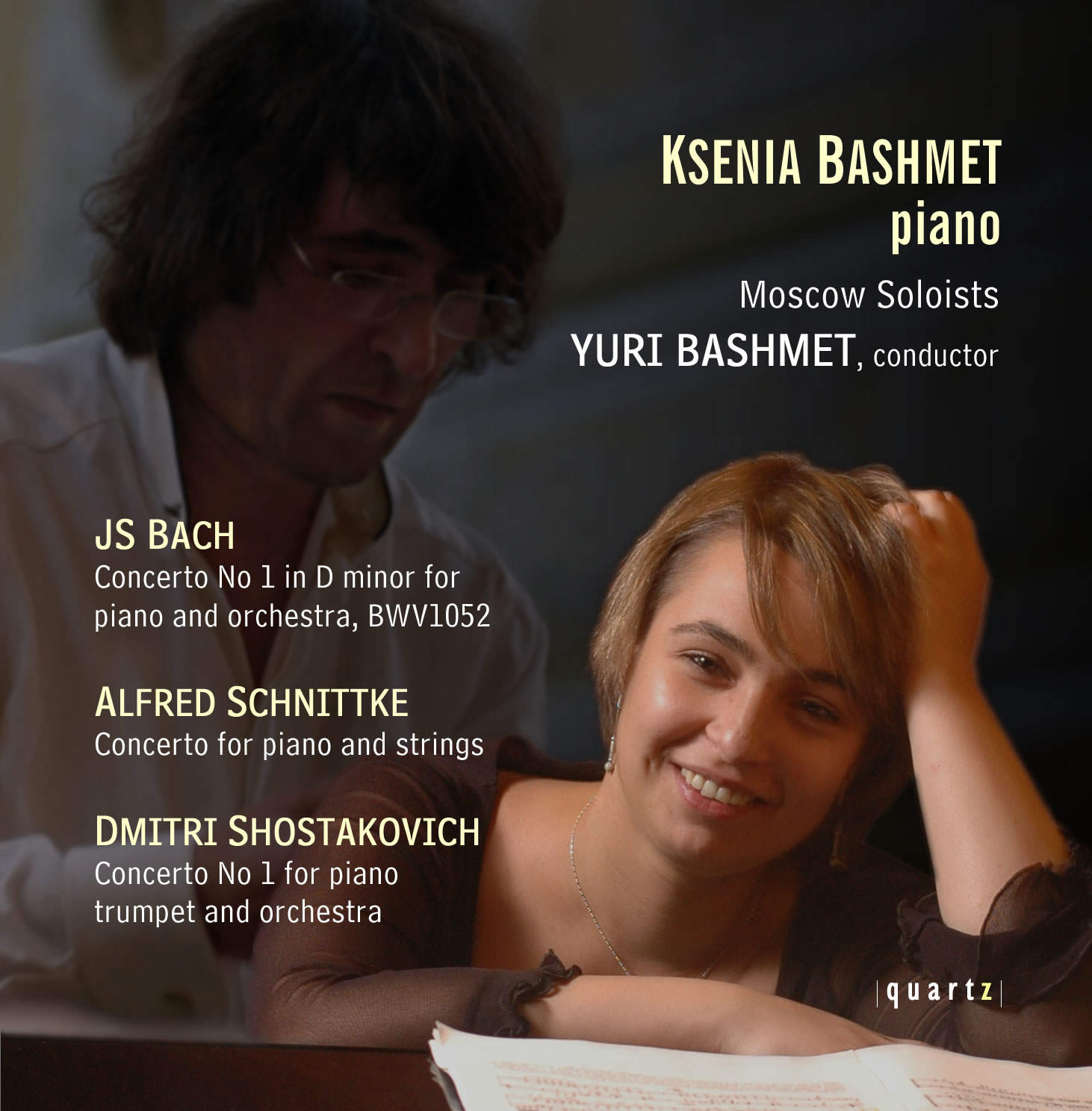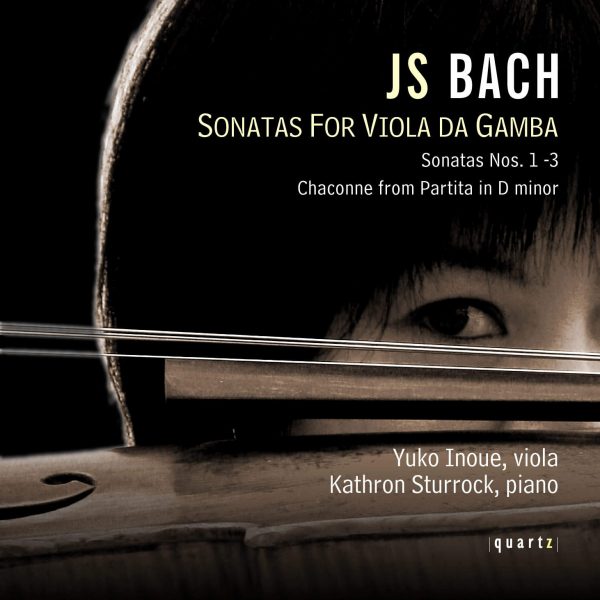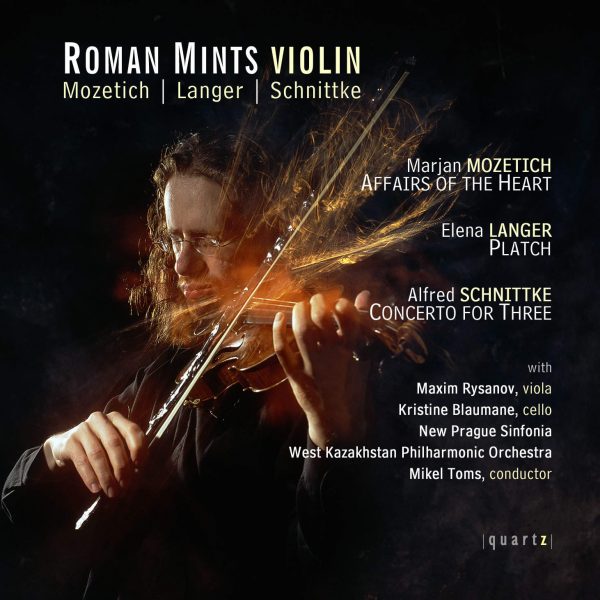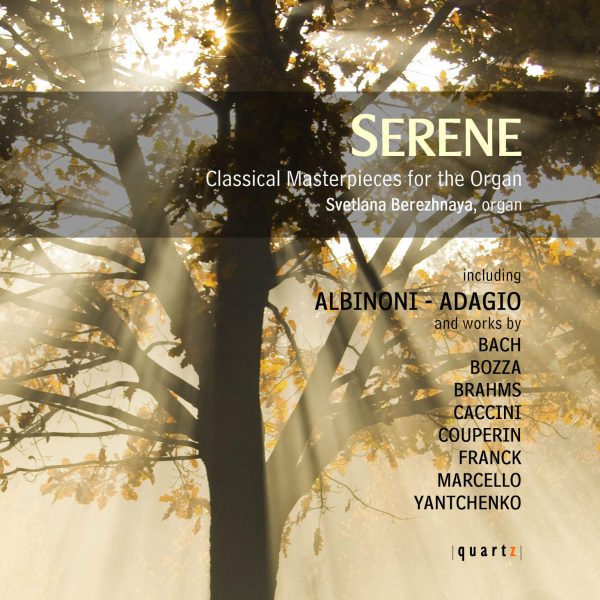Piano Concertos by Bach, Schnittke & Shostakovich
£4.99 – £11.99
JS BACH
Concerto No 1 in D minor for piano and orchestra, BWV 1052
ALFRED SCHNITTKE
Concerto for piano and strings (1979)
DMITRI SHOSTAKOVICH
Concerto No 1 for piano, trumpet and orchestra, op. 35 (1933)
KSENIA BASHMET, Piano
YURI BASHMET, conductor
MOSCOW SOLOISTS
The debut disc of Ksenia Bashmet, the rising Russian pianist who performs three great piano concertos conducted by her father, the legendary viola player Yuri Bashmet with his own ensemble of virtuosi, the Moscow Soloists.
About This Recording
All three of these concertos are by composers who enjoyed a lasting association with the keyboard. Johann Sebastian Bach (1685-1750) was among the leading organists and harpsichordists of his era, his improvisations a source of amazement to contemporaries. Dmitri Shostakovich (1906-75) was a finalist at the 1927 Warsaw Chopin Competition and appeared often as an exponent of his piano music. He also recorded the greater part of his piano music, notably the two concertos in 1958. Alfred Schnittke (1934-98) was no virtuoso, but it was as an ensemble pianist that he was able to travel abroad in the late 1970s, having earlier been denied access as a composer (he plays prepared piano on the Lithuanian Chamber Orchestra’s pioneering disc of Arvo Part’s Tabula Rasa). Moreover, his wife Irina is a noted pianist and teacher, for whom Schnittke wrote often during his later years and who has continued to
advocate his piano music since his death.
Concertos form the bulk of Bach’s orchestral output. Of the eight harpsichord concertos which are indisputably authentic, the D minor (often referred as ‘No. 1’ though its exact dating, as with so much of Bach’s music, is conjectural and can be ascribed no more specifically than to the later 1730s, when Bach was director of music at the Thomaskirche in Leipzig) was derived from the movements of an earlier cantata (No. 146) and may additionally have existed as a violin concerto. There are the customary three (fast-slow-fast) movements.
The opening Allegro begins with a vigorous unison theme that initiates a rigorous contrapuntal discourse, the theme providing individual motifs shared between piano and strings. There is a brief cadenza before the dialogue resumes and the movement heads to its decisive close. The Adagio opens with hesitant string gestures underpinned by sparse piano chords, after which the soloist adopts a more melodic manner and the music opens-out expressively. Having reached a peak of eloquence, the gaunt initial gestures return to effect a conclusion. The final Allegro balances the first movement in its intensive interplay of piano and strings, with imitative exchanges often underpinning the highly energetic discourse. The initial theme returns regularly between contrasted episodes, its final appearance ending the work conclusively.
Although not numbered as such, there are three works for piano and orchestra in Schnittke’s list of works. The earliest is a Piano Concerto (1960) that finds the composer still working through the idioms of Prokofiev, Khachaturian and Shostakovich, whereas Music for Piano and Orchestra (1964) is among the most radical of Schnittke’s serial pieces and was his first work to be premiered abroad (at the Warsaw Autumn Festival). The Concerto for Piano and Strings appeared in 1979, and was premiered by Vladimir Krainev with the Leningrad Philharmonic and Alexander Dmitriyev. Unlike the multi-movement format normally favoured by Schnittke, the work is in one continuous span – though a slow-fast-slow trajectory can clearly be perceived.
The piece opens with a questioning piano phrase that informs all of what follows. It soon takes on a more ominous aspect, with reiterated chords and clusters underpinned by resonant bass notes. Only now do the strings enter quietly, the piano writing increasing in density until a climax is reached with pounding chords alternating between the two forces. This dies away to leave a haunting texture of string glissandi and lilting piano figuration, the soloist at length alluding to the start.
Spectral gestures in upper strings over undulating basses usher in a vigorous new section, in which the motifs so far heard are made to ricochet agitatedly between piano and strings. There is a brittle interlude with unmistakable jazz undertones (listen out for the improvisatory pizzicato writing for double bass), before the music heads to a dissonant climax that effectively implodes into silence.
The piano now has a cadenza that touches on salient motifs, the initial phrase coming to the fore as increasingly aggressive figuration quickly takes hold of the keyboard. Strings re-enter as the alternating chordal sequence is reprised and the work’s main climax is reached, with piano and strings dispersing rapidly at its apex. It remains for the strings to initiate a resigned postlude, the soloist quietly alluding to previous motifs before a brief final assault – the music dying away with notes at the top of the keyboard resounding against hushed string chords.
When he wrote his Concerto for Piano, Trumpet and Strings – as a vehicle for his own pianism – in the first half of 1933, Shostakovich had spent the previous five years working on a succession of operas, ballets, theatre and film music. Hardly surprising that this work should evince a theatrical flair, as it runs the stylistic gamut from Viennese classics to the composer’s French and Russian predecessors, as well as several popular songs of the day that are also subject to witty parody.
The opening Allegro moderato begins with a lively flourish for piano and trumpet that leads into the pensive first theme, stated first by the solo piano and only taking on a greater animation when the strings enter. The second theme is a vaunting, often humorous idea that soon draws the trumpet into the fray; it builds to a spirited climax, then a concentrated but intensive development of both themes ensues. They are reprised in ingeniously varied guise, before the first theme returns at a slower tempo to end the movement in a more thoughtful manner.
The Lento opens with a soulful theme for violins over lower strings, the piano’s entry at first continuing the somnolent mood which only gradually moves to a confrontational climax between soloist and ensemble. This is capped by a forceful cadenza-like passage that quickly dies down, after which the strings steal back in with a rapt phrase that ushers in a reprise of the main theme – now given to muted trumpet. Only after this does the piano return to share in the limelight, notably in an eloquent dialogue with the cellos, before the movement finally fades away in a mood of melancholy regret.
The brief Moderato opens with rippling piano figuration countered by an effortful motion in the strings. This arrives at a pause, from which a lively piano gesture ushers in the final Allegro con brio. Its main theme is allotted to upper strings, with piano and trumpet soon playing a full part in the discourse. As it reaches a climax, a strident new theme for trumpet and strings is launched – the piano responding in like mind. After further exchanges, a central section emerges with a sardonic theme for trumpet over string accompaniment, the music gradually working its way round to a recollection of the first theme and then a cadenza that touches on all the salient gestures before making way for the coda. Piano and trumpet excitedly trade gestures as the music becomes ever more frenetic, with a reiterated ‘tattoo’ for these two instruments bringing the whole work to its effervescent close.
Richard Whitehouse
Track Listing
-
J.S. Bach
- Concerto No 1 in D minor (i) Allegro
- Concerto No 1 in D minor (ii) Adagio
- Concerto No 1 in D minor (iii) Allegro Alfred Schnittke
- Concerto for Piano and Strings Dmitri Shostakovich
- Concerto No 1 for Piano Trumpet & Strings (i) Allegro moderato
- Concerto No 1 for Piano Trumpet & Strings (ii) Lento
- Concerto No 1 for Piano Trumpet & Strings (iii) Moderato
- Concerto No 1 for Piano Trumpet & Strings (iv) Allegro con brio




